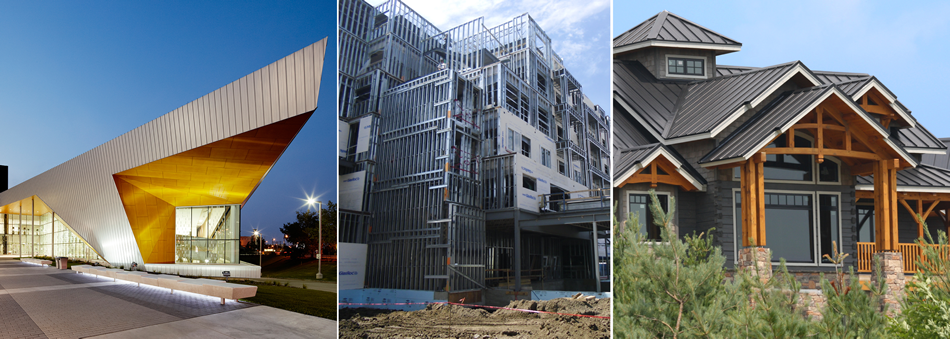Une caserne de pompiers - Burlington, ON
Réchauffement de la planète et changements climatiques font de plus en plus la manchette dans le monde. Des initiatives telles que le Protocole de Kyoto ont porté ces questions à l’avant-scène et proposent un cadre de travail et des objectifs en matière de réduction des émissions de gaz à effet de serre (GES). Les GES sont des gaz (vapeur d’eau, bioxyde carbone, méthane, etc.) qui absorbent la chaleur de la Terre et empêchent son évacuation dans l’espace. À mesure que les niveaux de GES augmentent dans l’atmosphère, un effet de serre se produit : l’atmosphère terrestre se réchauffe et entraîne inévitablement des changements climatiques mondiaux.
Les attitudes devant les enjeux environnementaux sont en pleine évolution dans le monde entier. Les pays développés s’engagent d’ici 2012 à réduire les émissions de GES à 5, 2 % sous leur niveau de référence de 1990. Le Canada s’est notamment engagé à réduire ses émissions de GES à 6 % sous les niveaux de 1990, soit un écart de 29,1 % entre le niveau actuel du pays et le niveau qu’il vise. Initiative ambitieuse, car les émissions de GES du Canada sont en hausse constante au fil des ans et en 2004, elles dépassaient de 26,6 % les niveaux de 1990. Sur une note positive, depuis deux ans, les émissions ont commencé à diminuer, mais il reste beaucoup de chemin à faire.
La quête d’un Canada plus vert se poursuit et l’industrie sidérurgique du pays ouvre la marche, en faisant de grands pas dans la réduction des émissions de GES, en conservant l’énergie et en réduisant son empreinte environnementale sur l’air, l’eau et le sol.
Faire notre part
Bien que toutes les industries du pays réexaminent leur empreinte environnementale, l’industrie sidérurgique canadienne réalise
d’importants progrès en fabriquant des produits plus verts pour les utilisateurs finaux, tout en faisant le ménage dans ses propres
méthodes manufacturières. L’industrie sidérurgique nord-américaine consacre près de 15 % de ses dépenses d’immobilisations au
développement environnemental et durable de ses installations.
L’engagement de l’industrie sidérurgique canadienne prévoit sa collaboration avec tous les paliers de gouvernement pour développer
de nouvelles méthodes et technologies qui aident à réduire les émissions de GES et les polluants atmosphériques, à conserver l’e au
douce et à réduire l’incidence de ses activités sur les sols en générant moins de déchets. Entre 1990 et 2006, notre industrie
sidérurgique a obtenu des résultats remarquables avec une réduction de plus de 24 % en émissions de GES directement liées à ses
activités par tonne d’acier produite, tout en réussissant à accroître la productivité de plus de 18 %.
Coup d’œil plus attentif à la production d’acier au Canada
Le secteur sidérurgique du Canada est l’une des plus importantes industries du pays, avec des ventes annuelles de plus de
11 milliards $, dont 3 milliards $ en exportations. Le Canada compte 13 aciéries, réparties entre l’Alberta, la Saskatchewan, le
Manitoba, le Québec et l’Ontario. Les aciéristes canadiens utilisent deux procédés sidérurgiques différents :
- Les convertisseurs basiques à oxygène (Basic Oxygen Furnaces – BOF) assurent 59 % de la production d’acier au Canada. Ce procédé combine le minerai de fer non affiné à de 25 à 35 % de ferraille fondue pour fabriquer des produits tels que des barres, des tiges, des profilés, des plaques, des tôles, des tuyaux, des tubes et des produits laminés à plat.
- Les fours électriques à arc (Electric Arc Furnaces – EAF) assurent 41 % de la production d’acier au Canada. Ce procédé utilise jusqu’à 100 % de ferraille pour fabriquer des produits tels que des poutres, des plaques et des barres de renforcement.
Télécharger INFO environnemental #1: L’acier et le virage vert pour en savoir plus.












